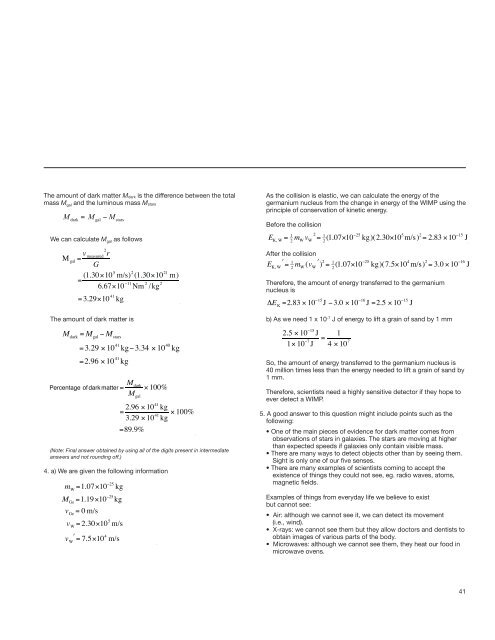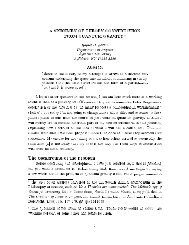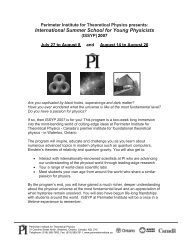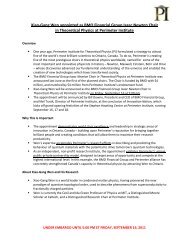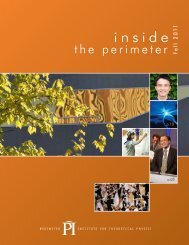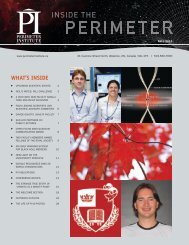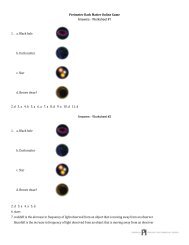Dark Matter Teacher Guide - Perimeter Institute
Dark Matter Teacher Guide - Perimeter Institute
Dark Matter Teacher Guide - Perimeter Institute
You also want an ePaper? Increase the reach of your titles
YUMPU automatically turns print PDFs into web optimized ePapers that Google loves.
The amount of dark matter Mdark is the difference between the total<br />
mass M gal and the luminous mass Mstars<br />
We can calculate M gal as follows<br />
The amount of dark matter is<br />
(Note: Final answer obtained by using all of the digits present in intermediate<br />
answers and not rounding off.)<br />
4. a) We are given the following information<br />
As the collision is elastic, we can calculate the energy of the<br />
germanium nucleus from the change in energy of the WIMP using the<br />
principle of conservation of kinetic energy.<br />
Before the collision<br />
After the collision<br />
Therefore, the amount of energy transferred to the germanium<br />
nucleus is<br />
b) As we need 1 x 10 -7 J of energy to lift a grain of sand by 1 mm<br />
So, the amount of energy transferred to the germanium nucleus is<br />
40 million times less than the energy needed to lift a grain of sand by<br />
1 mm.<br />
Therefore, scientists need a highly sensitive detector if they hope to<br />
ever detect a WIMP.<br />
5. A good answer to this question might include points such as the<br />
following:<br />
• One of the main pieces of evidence for dark matter comes from<br />
observations of stars in galaxies. The stars are moving at higher<br />
than expected speeds if galaxies only contain visible mass.<br />
• There are many ways to detect objects other than by seeing them.<br />
Sight is only one of our five senses.<br />
• There are many examples of scientists coming to accept the<br />
existence of things they could not see, eg. radio waves, atoms,<br />
magnetic fields.<br />
Examples of things from everyday life we believe to exist<br />
but cannot see:<br />
• Air: although we cannot see it, we can detect its movement<br />
(i.e., wind).<br />
• X-rays: we cannot see them but they allow doctors and dentists to<br />
obtain images of various parts of the body.<br />
• Microwaves: although we cannot see them, they heat our food in<br />
microwave ovens.<br />
41


